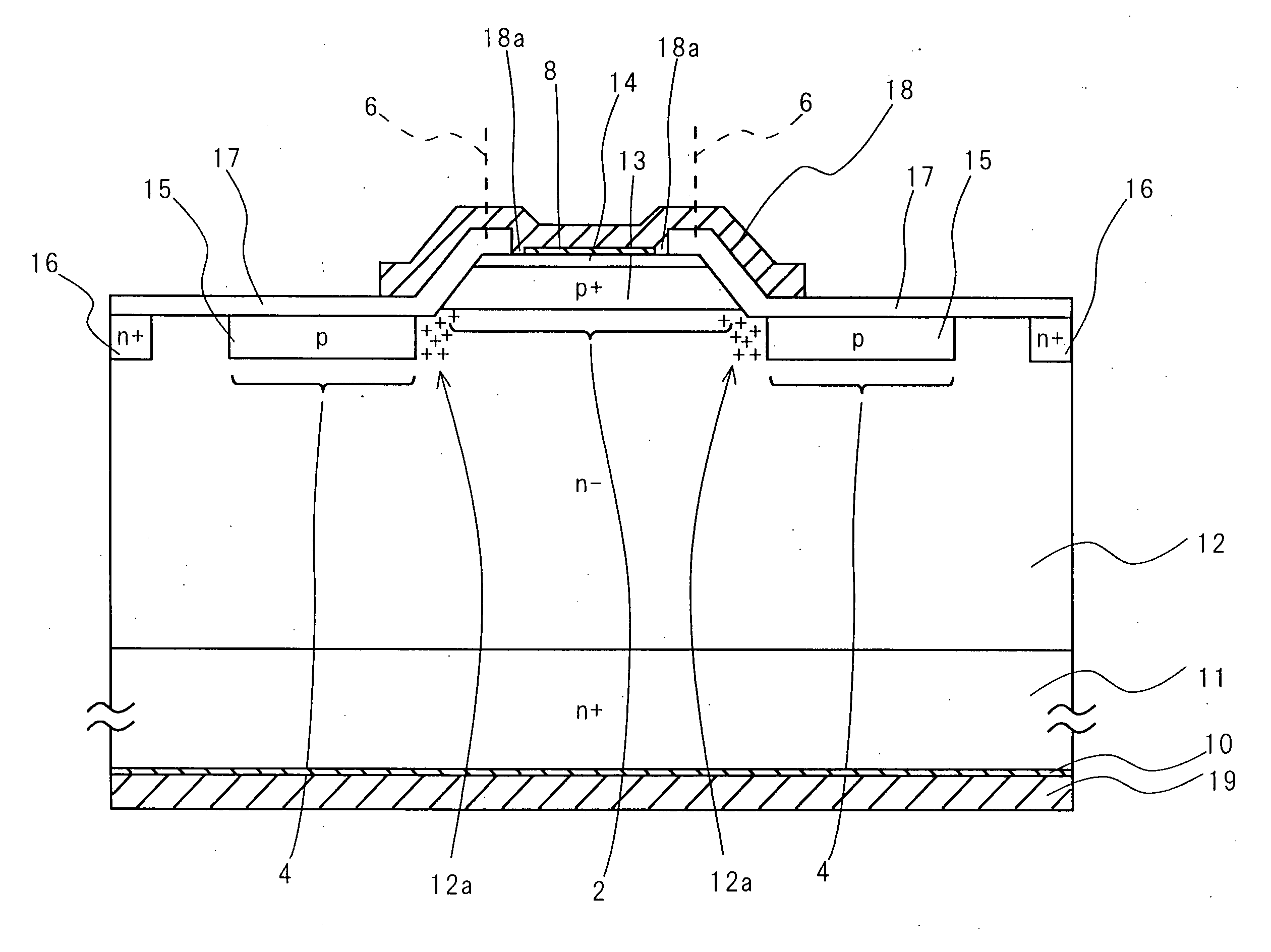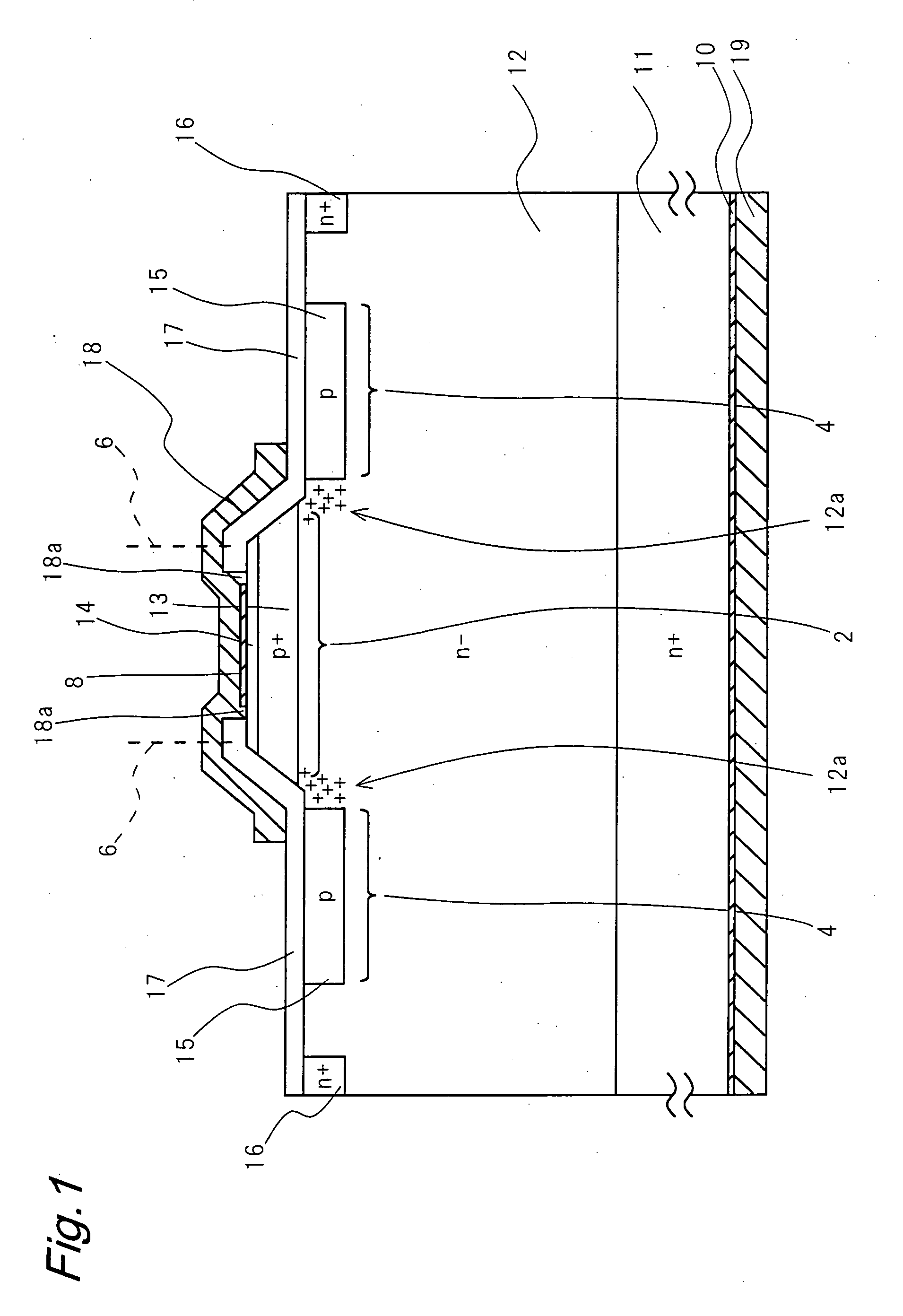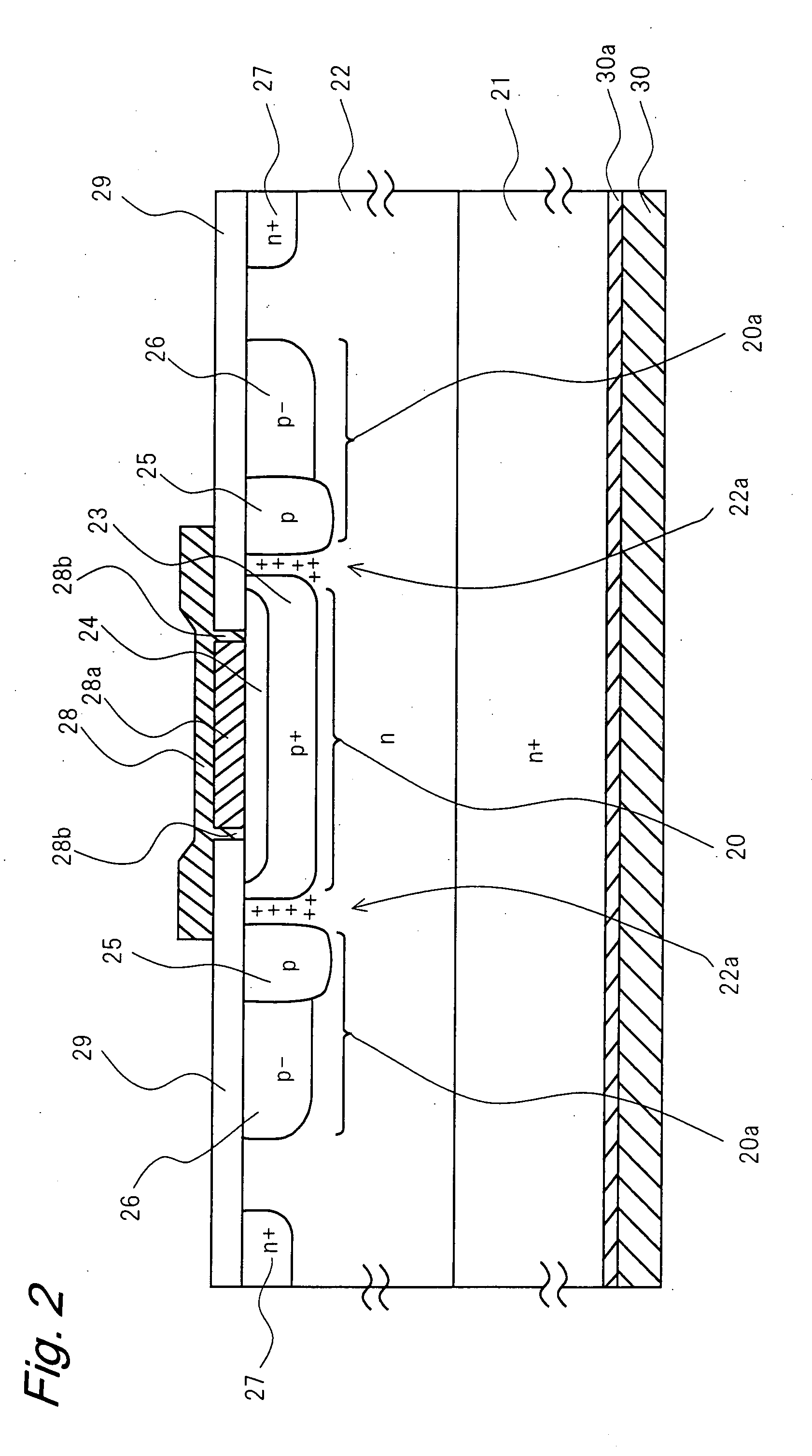High-withstand voltage wide-gap semiconductor device and power device
a technology of wide-band semiconductors and power devices, applied in semiconductor devices, basic electric elements, electrical appliances, etc., can solve the problems of small losses and greatly reduced turn-on resistance, and achieve the effect of suppressing the increase of stacking faults and rising forward-direction voltag
- Summary
- Abstract
- Description
- Claims
- Application Information
AI Technical Summary
Benefits of technology
Problems solved by technology
Method used
Image
Examples
first embodiment
[0065]FIG. 1 is a cross-sectional view of a mesa-structure SiC PIN junction diode, which is the high-withstand voltage wide-gap semiconductor device of a first embodiment of the invention. In the figure, an n−-type SiC semiconductor drift layer 12 of thickness 75 μm and with impurity concentration 1×1014 cm−3 is formed, by epitaxial growth techniques, on a substrate 11 of n+-type SiC semiconductor, with impurity concentration 1×1019 cm−3, which acts as a cathode of thickness 400 μm. On the lower surface of the substrate 11 is provided a cathode electrode 19 (second electrode) of gold, copper or similar, with an Ohmic contact layer 10 intervening to maintain a satisfactory state of electrical contact. On the drift layer 12 are formed, in order, a p+-type SiC semiconductor anode layer 13, with impurity concentration 1×1018 cm−3 and thickness 1.5 μm, and a p+-type SiC semiconductor contact layer 14, with impurity concentration 1×1019 cm−3 and thickness 0.2 μm, using epitaxial growth te...
second embodiment
[0076]FIG. 2 is a cross-sectional view of a planar-structure SiC PIN junction diode, which is the semiconductor device of a second embodiment of the invention. In the figure, an n-type SiC drift layer 22, with impurity concentration 5×1014 cm−3 and of thickness 50 μm, is formed by epitaxial growth techniques on an n+-type SiC substrate 21, with impurity concentration 1×1019 cm−3 and of thickness 400 μm, operating as a cathode. In the center region of the drift layer 22, ion implantation techniques are used to form a p+-type SiC anode layer 23, with impurity concentration 1×1018 cm−3 and of thickness 0.5 μm, and a p+-type SiC contact layer 24, with impurity concentration 1×1019 cm−3 and of thickness 0.2 μm. A function 20 (first pn junction) is formed between the anode layer 23 and the drift layer 22.
[0077] Further, p−-type SiC JTE layers 25, with impurity concentration 8×1017 cm−3, of thickness 0.8 μm and length in the lateral direction approximately 25 μm, are provided at a distanc...
third embodiment
[0085]FIG. 3 is a cross-sectional view of a mesa-structure SiC GTO which is the high-withstand voltage, wide-gap semiconductor device of a third embodiment of the invention. In the figure, a p-type SiC buffer region 33 is formed on the upper surface of the substrate 32, comprising an n+-type SiC emitter region, and having a cathode 31 (second electrode) on the lower surface. On the buffer region 33 is formed a p−-type SiC base region 34; in the center of the base region 34 is formed a mesa-structure n-type SiC base layer 35. A junction 30 (first pn junction) is formed between the base region 34 and the base layer 35. Four gate electrodes 40 are provided in the base layer 35. The four gate electrodes 40 are connected at a portion not shown in the figure. A p-type SiC emitter layer 36 is formed between each of the gate electrodes 40.
[0086] The n+-type SiC substrate 32 has an impurity concentration of 1×1019 cm−3, and a thickness of 300 μm. The buffer region 33 has an impurity concent...
PUM
 Login to View More
Login to View More Abstract
Description
Claims
Application Information
 Login to View More
Login to View More - R&D
- Intellectual Property
- Life Sciences
- Materials
- Tech Scout
- Unparalleled Data Quality
- Higher Quality Content
- 60% Fewer Hallucinations
Browse by: Latest US Patents, China's latest patents, Technical Efficacy Thesaurus, Application Domain, Technology Topic, Popular Technical Reports.
© 2025 PatSnap. All rights reserved.Legal|Privacy policy|Modern Slavery Act Transparency Statement|Sitemap|About US| Contact US: help@patsnap.com



